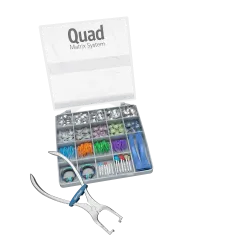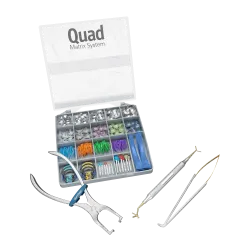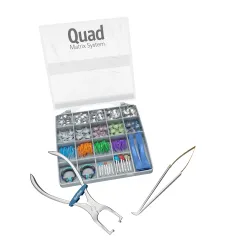Are your curing lights performing effectively? Find out for FREE
Deep carious lesions pose significant challenges in dental practice, requiring meticulous management to preserve both tooth structure and pulpal health. While conservative approaches are recommended, achieving proper sealing, as well as accurate proximal contacts and contours, can be particularly challenging depending on the depth of the lesion. Research shows that sectional matrix systems with separation rings outperform circumferential matrices in creating tighter, more reliable contacts in Class II composite restorations. This is why selecting and applying the right matrix system is critical to prevent issues such as overhanging margins, open contacts, and food impaction—factors that can lead to periodontal complications.
To address these challenges, Garrison® Dental Solutions has developed the Quad Matrix System™—a revolutionary system designed to simplify even the most complex Class II direct restorations. Unlike traditional wedges (solid or hollow), which are pushed upward by the papilla and often distort the matrix, the unique split wedge technology of the Quad wedge conforms naturally to the “V”-shaped embrasure space. This design allows the wedge to remain low in the embrasure, maintaining the matrix’s shape and contour. Additionally, the asymmetrical tips and pads of the Quad ring work synergistically with the split wedge, enhancing the axial wall adaptation and ensuring a tight marginal seal. The system applies force precisely within the tooth’s embrasure space, resulting in a more consistent and effective restoration process.
This clinical case report demonstrates the restoration of a single Class II composite on the mesial side of a maxillary left first molar using the Quad Matrix System, showcasing the benefits discussed above.













